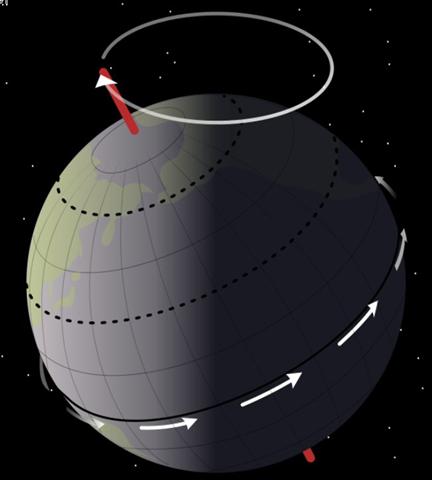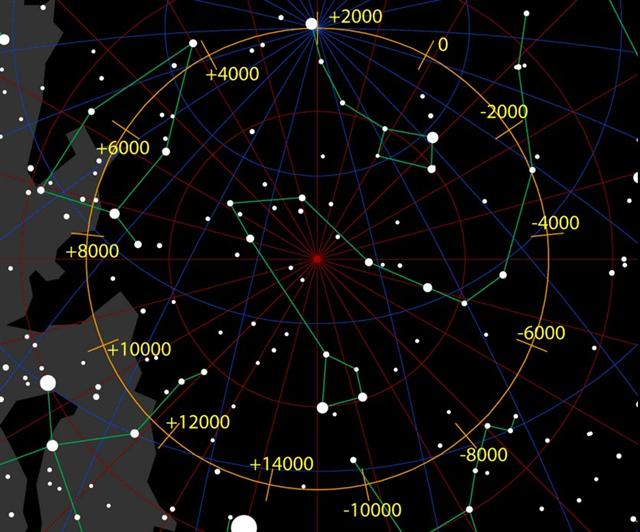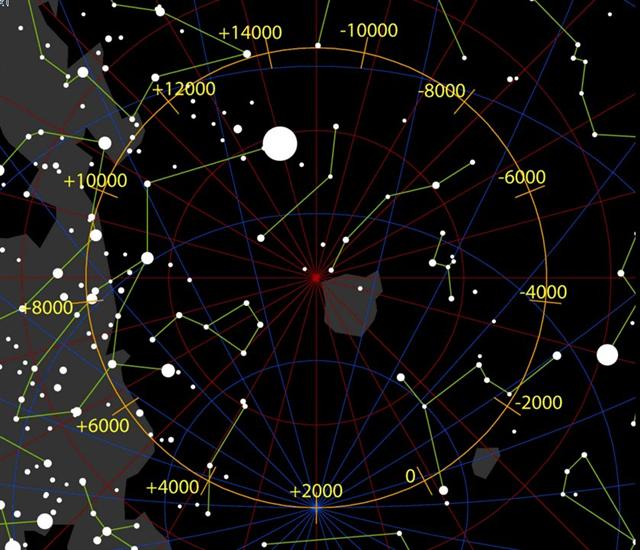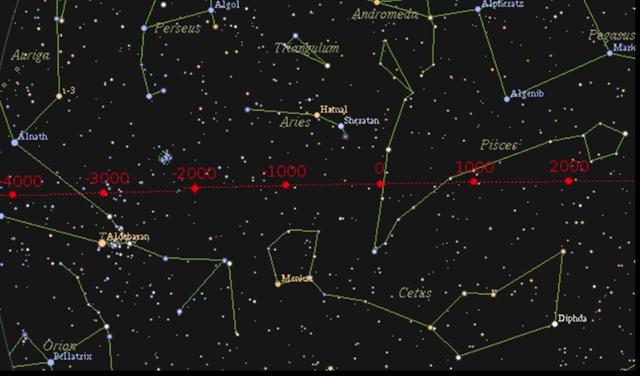Once again. The axis of the Earth was not standing still but its end was moving in a circle - as if it had been a spinning top influenced by the force of gravity.
As a consequence both the north and the south stars at the poles had to change over time. Polaris (α Ursae Minoris) is our current star at the northern pole (towards which the axis of the Earth today is approximately pointing). And Thuban (α Draconis) had been at the pole around 3000 B.C.:
However, there is at present no bright star at the southern pole, towards which the other end of the Earth's axis is pointing:
In March the Sun looked as if he was moving up from the southern to the northern hemisphere and in September as if he was leaving the northern hemisphere on his way down to create summer south of the equator, to go down to his Summer Maid: Hamiora Pio once spoke as follows to the writer: 'Friend! Let me tell of the offspring of Tangaroa-akiukiu, whose two daughters were Hine-raumati (the Summer Maid - personified form of summer) and Hine-takurua (the Winter Maid - personification of winter), both of whom where taken to wife by the sun ... Now, these women had different homes. Hine-takurua lived with her elder Tangaroa (a sea being - origin and personified form of fish). Her labours were connected with Tangaroa - that is, with fish. Hine-raumati dwelt on land, where she cultivated food products, and attended to the taking of game and forest products, all such things connected with Tane. (Elsdon Best, The Astronomical Knowledge of the Maori.) The positions of the equinoxes - when the Sun moved quickly across the equator - were firmly connected to the axis of the Earth. Hence the positions of the equinoxes had to change when the axis of the Earth moved. For a long time the northern spring equinox had been where the Ram (Aries) and the head of the Sea Beast (Cetus) rose with the Sun, but then its location had changed to the region of the Fishes (Pisces):
This knowledge is essential for our understanding of the glyph text. |



